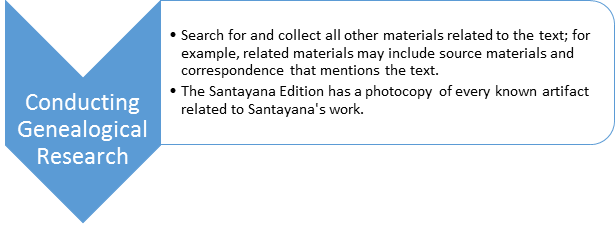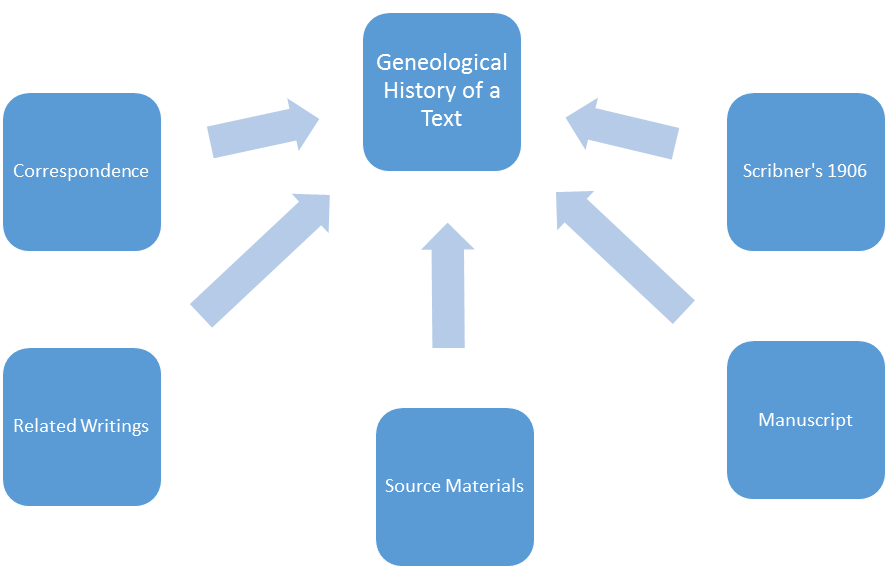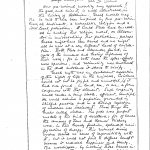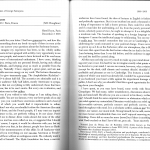
As soon as the text in all of its forms are gathered, then materials related to the text are sought out. Related materials can be a whole host of items including, but not limited to, source materials, related writings, and correspondence which mention the text. The related materials are important to the process because they allow the project editors to better collate the documents. The source materials also help verify the references made in the text itself, as well as enable the editors to include or update the reference information on a particular source. Chapters of Santayana’s works were often published serially, so those publications can be helpful in sorting out changes as well. Letters that mention the text are usually to the publishing house reviewing the material, so they can explain changes Santayana wanted or did not want to make to the text. However, Santayana also wrote to other people about his work and these letters can also include some insights into changes he wanted or feelings he had about the text.
The Santayana Edition has a photocopy of every known piece of Santayana’s writings, so the project editors usually have all versions of a text and related materials. If, for any reason, the photocopies are unreadable, the editors must request another photocopy from the place, usually Harvard, that has the text in question or it may send its own staff to copy the text.
The images below are samples of the kind of materials that were related to The Life of Reason: Reason and Science.
- 1 is part of Chapter 8 from the manuscript form of Reason in Science.
- 2 is a letter that George Santayana wrote about Reason in Science to Charles Strong.
- 3 is a letter that George Santayana wrote to William James mentioning Reason and Science.
- 1
- 2
- 3




